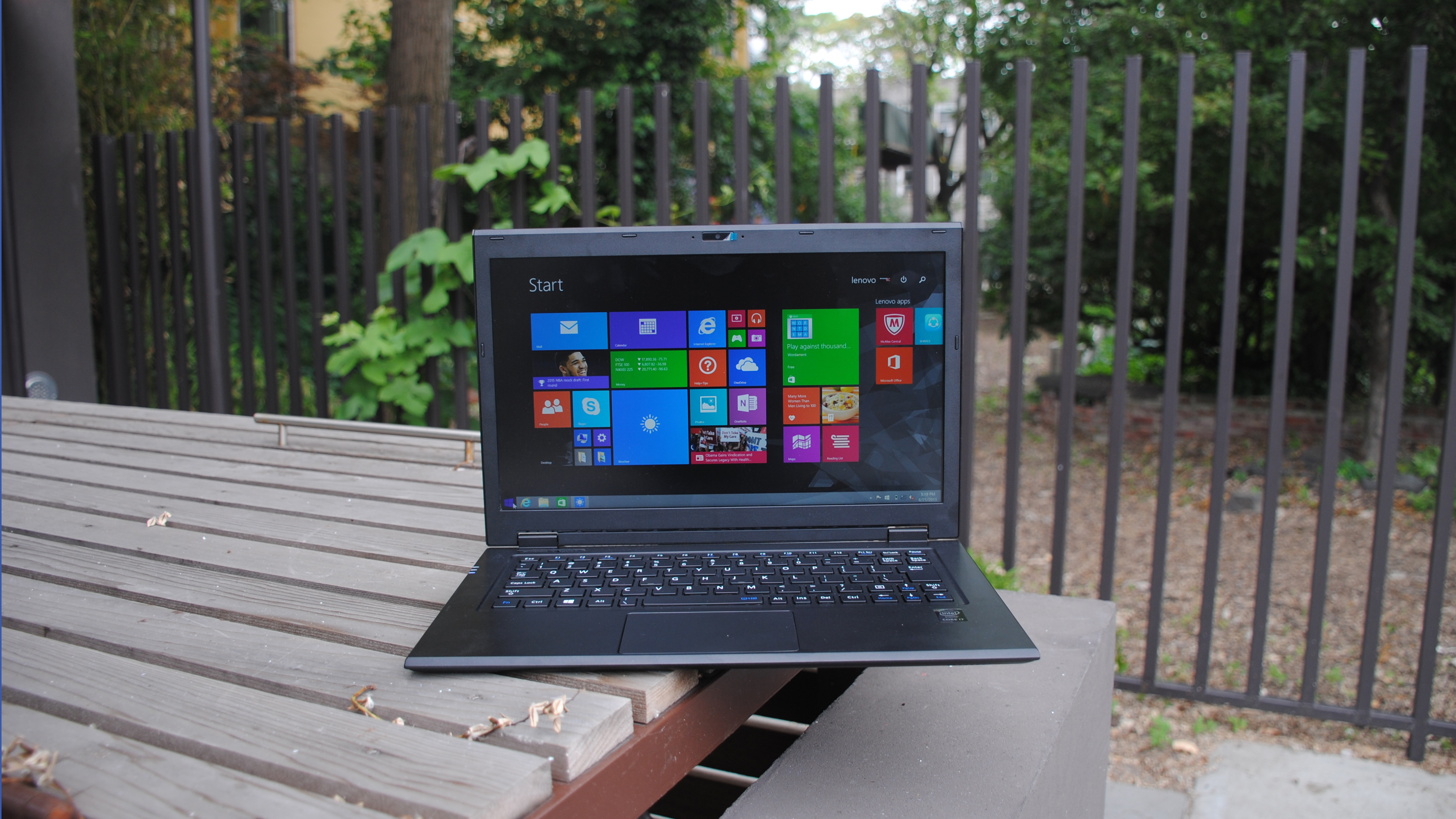Why you can trust TechRadar
How that industry-leading processor performs in day-to-day tasks is what allows the LaVie to stand among the best Ultrabooks in the world.
This isn't just a lightweight laptop – this skinny kid can fight.
That's due in large part to Intel's Core i7 chip, which the Dell XPS and Asus Zenbook don't have in their standard, entry-level models. The difference between Core i7, Core i5 and Core M is apparent. However, it should be noted that you can upgrade the XPS 13 to a Core i7 for double the cost of the laptop. The ZenBook, however, is Core M-only.
Benchmarks
Here's how the Lenovo LaVie Z HZ550 performed in our suite of benchmark tests:
- 3DMark: Cloud Gate: 5,428; Sky Diver: 2,836; Fire Strike: 754
- Cinebench CPU: 253 points; Graphics: 27 fps,
- PCMark 8 (Home Test): 2,379 points
- PCMark 8 Battery Life: 3 hours and 18 minutes
The LaVie knocked its Ultrabook competitors out of the park with a terrific PCMark 8 Home score of 2,379 points, compared to the Dell XPS 13, which scored a 2,104, and the Zenbook's 2,107. Although we weren't able to perform a direct side-by-side comparison to the LaVie, the most recent version of the 13-inch MacBook Air has produced industry-wide scores in the 2,400-2,500 range, which is on par or slightly better than the LaVie.
This isn't just a lightweight laptop – this skinny kid can fight.
The UX305 features an Intel HD 5300 graphics chip. The XPS 13 and LaVie feature a newer, more powerful Intel HD 5500 GPU, which was released in early 2015. As a result, the XPS 13 and LaVie are your best bet among their direct competition for design work and light gaming. The XPS 13 scored a 739 on 3DMark's Fire Strike test, which measures graphics rendering. The LaVie scored a slightly superior 754 on the test. The lowly ZenBook only scored 594 points.
Sign up to the TechRadar Pro newsletter to get all the top news, opinion, features and guidance your business needs to succeed!

It also outperformed the competition during 3DMark's Cloud Gate test, which analyzes a computer's ability to process graphics and manage gameplay physics. The XPS 13 scored 4,935 points, the Zenbook scored a 4,210, all of which pale in comparison to the LaVie's 5,428.
None of these laptops is going to satisfy hardcore gamers; however, the LaVie scored a 2,836 on 3DMark's Sky Diver test, while the XPS 13 scored a close-but-no-cigar 2,745 points, which outscored the Asus by 500 points.
During Cinebench's frame rate test, the XPS 13 managed 29 frames per second (fps), just slightly more than the LaVie's 27 fps. The Asus only achieved 22 fps. The XPS scored 258 points during Cinebench's CPU test, which measures a CPU's multi-core and hyper threading performance. The LaVie came close to this score with an admirable 253 points. The Asus only scored 202 points, unsurprisingly.
Battery life
If you're going to have an issue with the LaVie, it's its inferior battery life. Compared to the XPS 13, whose battery lasted 4 hours and 21 minutes during the PCMark 8 battery life test, and the Zenbook, which lasted for 5 hours and 21 minutes, the LaVie was only able to remain powered for 3 hours and 18 minutes. The test, which performs a wide range of tasks simultaneously, including video editing, web browsing and gaming, is an ideal way to measure how the laptop will withstand a modest working environment.
With the entry-level XPS, third party sites were able to crank out about 12 to 13 hours of video playback by lowering the screen brightness and audio volume to 50%. The most recent MacBook Air played looped video for more than nine hours on several third-party tests. The ZenBook gave it a decent go at 5 hours and 26 minutes of more hardcore usage during TechRadar's own testing, and about 9 hours of looped video with third-party sites.

The LaVie was more in-line with the MacBook and the ZenBook. It was able to play looped video for around 9 hours with the screen brightness and audio dropped to 50%. When I played Netflix videos continuously, I was only able to reach the 6-hour mark. Running basic tasks, like data entry, web chatting and word processing, I was able to max out at about 7 hours. You're not getting shortchanged by using the LaVie, but if a full day's charge is required, then the entry level XPS 13 is probably a safer bet for you.
